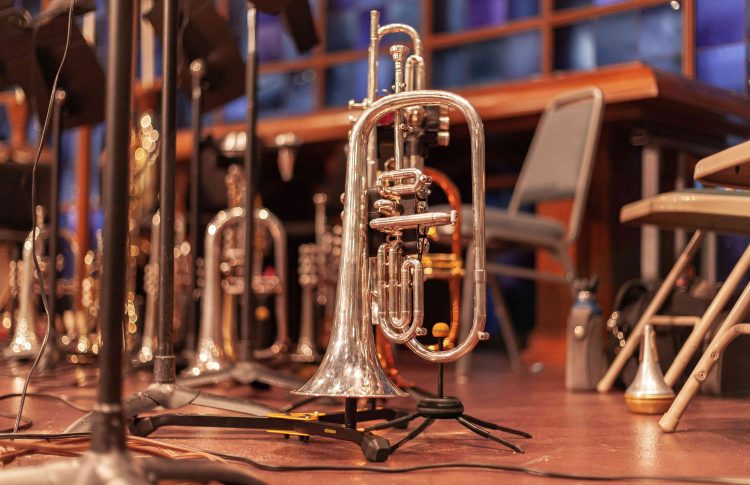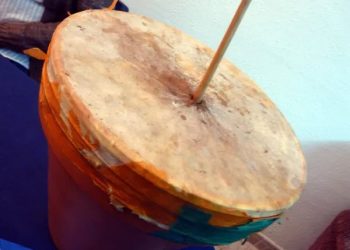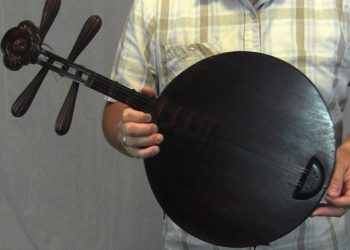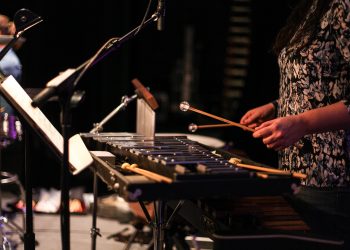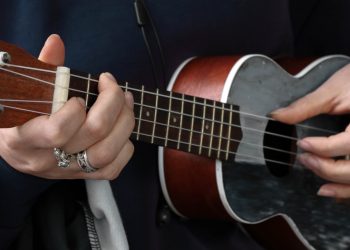Music is an art form that has captivated humans for centuries, and one of the most fascinating aspects of music is the wide range of musical instruments available to create it. From the rhythmic beat of drums to the melodic strains of a violin, each instrument has its unique sound, history, and cultural significance. Among the many musical instruments in the world, there are some that start with the letter T, which have their distinct characteristics and have contributed to the diverse range of music we enjoy today.
In this article, we will explore the top 18 musical instruments that start with the letter T, providing you with insight into their history, sound, and use in different music genres. These instruments come from various regions, cultures, and musical traditions, showcasing the vast diversity of musical expression worldwide. We will cover a range of instruments, including some you may have heard of, like the trumpet and the trombone, and others that might be entirely new to you, such as the taiko drum and the timple.
Whether you’re a seasoned musician or someone who enjoys listening to different types of music, this article will provide you with an excellent opportunity to expand your knowledge and appreciation of the diverse world of music. So, join us on this musical journey as we explore the fascinating world of musical instruments that start with the letter T.
1. Tabor
Tabor is an ancient percussion instrument that consists of a small drum with a single head, usually made from animal hide. It has been used for centuries as a religious and folk symbol. The tabor was traditionally played by striking the drumhead with either hands or sticks, resulting in a loud sound. This distinctive sound makes it popular among musicians who want to add some flavor to their music.
The design of the tabor varies depending on its purpose; tabors can be found in different shapes and sizes ranging from very large drums called ‘tumblers’ to smaller hand-held models. In addition, there are several kinds of materials used for making these instruments such as wood, metal, leather, plastic and even bamboo. Tabors can also be decorated with intricate carvings or painted designs depending on personal preference.
A variety of methods can be employed when playing the tabor; one common method involves using two sticks while holding the instrument between your legs. Another technique includes hitting the drumhead with your palm while tapping out rhythms on the sides with your fingers. Regardless of which approach you take, adding this unique element to any musical arrangement will surely make it stand out amongst other tunes!
No matter what genre you’re playing, incorporating a tabor into your performance adds character and depth – not only does it provide visual stimulation but it also gives off an interesting sonic texture too. With its versatility and ease-of-use, anyone can have fun creating fresh beats with this classic instrument!
2. Taegum
The taegum is another ancient percussion instrument, similar to the tabor but with some distinct differences. It consists of a conical wooden body and metal-tipped bamboo reeds that vibrate when air passes through them. The unique sound produced by this combination of materials makes it popular among folk musicians in Korea and other countries around the world.
Unlike most drums, playing the taegum requires one’s hands to be placed on either side of its body while pressing against the reeds as if blowing into a flute. This technique produces an array of tones which can be manipulated depending on how hard or soft you press your fingers against the tips. In addition to producing melodic sounds, taegums are also capable of creating rhythmic beats due to their distinctive shape and size.
Another advantage of using a taegum compared to other instruments like tabors is its portability – they’re lightweight enough to carry around without taking up too much space! This makes them ideal for outdoor performances where there may not be access to power sources or amplifiers needed for larger instruments. Not only does this allow more flexibility in terms of venues, but it also allows performers to showcase their music wherever they go!
Whether used alone or as part of an ensemble, incorporating a taegum into your performance adds texture and depth that will surely captivate any audience. With its ability to produce both melodic and percussive sounds, the possibilities are endless when playing this versatile instrument!
3. Taganing
A similar instrument to the taegum is the taganing, which has a more compact design while still providing a wide range of tones. This percussion instrument consists of two conical-shaped shells that are joined together at one end and held in place with leather straps. It features metal keys along its sides that can be struck by bamboo sticks or even your hands to produce different kinds of sounds.
The beauty of playing this traditional Korean instrument lies in its versatility – it can be used as either an accompanying rhythm instrument or as a lead soloing tool depending on how you choose to play it. Unlike drums, you don’t need to hit all the keys at once; instead, you can create subtle nuances using single notes for complex melodies or rhythms. Additionally, tagging also produces unique reverberations due to its hollow construction, allowing performers to explore soundscapes like never before!
Taganing instruments come in various sizes so they’re not only suitable for outdoor performances but also ideal for indoor settings too! Moreover, their lightweight design makes them easy to transport from venue to venue without breaking a sweat – perfect for musicians on the go! With enough practice and dedication, anyone can learn how to master this captivating instrument and add something special to their music repertoire.
Though seemingly small in size compared to other percussive instruments such as tabors and taegums, taganings have the potential to bring life into any performance setting due to the variety of tones they offer when played correctly. Whether part of an ensemble or performed alone, these musical wonders will surely delight audiences everywhere!
4. Taiko
Another powerful percussion instrument to explore is the taiko. This traditional Japanese drum creates a thunderous sound that’s sure to captivate any audience. It consists of a wooden body covered with cowhide and filled with sand or gravel for extra resonance. Striking it with thick bamboo sticks produces a rich tone that carries far away, allowing musicians to reach even further out into their performances.
What truly makes this instrument unique is its size – varying from small handheld sizes to gigantic drums that require multiple people to operate! Taikos are often used in religious rituals and festivals, creating an atmosphere of celebration wherever they go. As such, learning how to play it properly can be a great way to boost your performance skills as well as show off your cultural knowledge on stage.
The range of sounds you can create with these instruments is immense – from low reverberations perfect for underlying rhythms all the way up to high-pitched slaps ideal for solos. Furthermore, there are plenty of different techniques available which allow players to craft intricate melodies while still keeping things simple enough so beginners won’t get overwhelmed. All in all, taiko offers a world of possibilities when it comes to crafting complex yet accessible beats – something anyone interested in percussive music should definitely check out!
Taiko has been around since ancient times and continues being popular today due its power and versatility. Whether you’re looking for big impactful tones or subtle nuances, this remarkable instrument will always have something new and exciting in store!
5. Talking Drum
The talking drum is one of the oldest percussion instruments in existence, and holds a special place in many cultures. This distinctly shaped hand-held instrument consists of a hollowed out wooden shell with two membranes stretched across it – usually made from animal hide or synthetic material. The player holds the drum by its handle while striking the head to produce sounds that can be heard over long distances.
One of the main uses for this type of musical tool is communication. By varying pressure on either side of the membrane, players are able to create a range of tones which allow them to mimic spoken language. As such, it’s often used as an important way to send messages between villages or other settlements. It’s also found its way into popular music genres too – like West African Highlife and Afrobeat!
Playing the talking drum takes some practice, but once you have mastered some basic techniques you’ll find yourself exploring limitless possibilities for creative expression. Learning how to change pitch and rhythm gives you control over how your message is conveyed – making it perfect for not only traditional performances but any kind of modern composition too!
No matter what style of music you’re trying to create, having a talking drum at your disposal will add plenty of character and depth to your soundscape. So whether you’re looking for an effective form of communication or just want something unique to spice up your tracks, this ancient instrument has so much offer!
6. Tama
The tama is another percussion instrument that has been around for centuries, originating in West Africa and now spread across the world. This unique drum consists of a wooden shell covered with animal hide or synthetic skin, which gives it its characteristic sound. The player holds the drum by its handle while striking the head to produce sounds that can be heard from a distance.
Unlike other drums, the tama uses two mallets to create tones – rather than just one hand like with most others. It’s usually played on top of a stand so both hands are free to move around freely and experiment with different rhythms and patterns. By using this method, players are able to create complex polyrhythms – making it an ideal accompaniment for jazz music or traditional African styles such as highlife or Afrobeat!
Thanks to its versatility, the tama can fit into any genre of music – whether you’re creating something soft and mellow or loud and energetic. The range of possible tones makes it perfect for adding texture and depth too – giving your tracks some extra character without overpowering them.
From communication to modern composition, the tama offers plenty of possibilities for creative expression. Whether you’re looking for something unique to spice up your beats or just want an effective way to send messages between villages, this timeless instrument will definitely give your soundscape that extra edge!
7. Tambora
The tambora is a traditional drum originating from the Caribbean and Latin American regions, which is commonly used in Afro-Latin music. It has two heads – one made of animal skin or synthetic material, while the other side is usually composed of metal plates to create a metallic sound. The player holds the drum by its handle while striking either head with their hands or sticks to produce different tones – giving it an incredibly versatile range of sounds!
This instrument can be played solo or accompanied with other instruments for more complex polyrhythmic patterns. Its unique tonal qualities make it perfect for creating energy and excitement in any genre, from salsa and merengue to reggae and funk. The tambora also works great as part of larger ensembles too – adding texture and depth without overpowering other elements in the mix.
In addition to being an incredible accompaniment for live performances, the tambora can also be used as a melodic instrument thanks to its vast array of tones. Players are able to craft catchy melodies that stand out among other instruments in the track – making them especially useful when you want something truly memorable in your compositions!
Whether you’re looking for something new and interesting to add into your beats or just need some extra rhythmic power behind your tracks, the tambora will definitely do the job! With its ability to provide both dynamic rhythms and entrancing melodies, this timeless percussion instrument remains an essential tool for any modern musician’s arsenal.
8. Tambourine
Another popular percussion instrument is the tambourine. This small, round frame drum produces a bright jingle-like sound when shaken or struck with one’s hand. It has been used in many different musical styles throughout history and continues to be an essential part of any rhythm section today.
The main components of a tambourine are its metal jingles or ‘zils’ which are mounted on either side of the head. These produce a high pitched clacking noise when hit against each other while being held between your thumb and index finger – just like a pair of maracas! Additionally, you can vary the tone by striking different parts of the skin head or using various stick techniques such as muffling or dampening. You can even add some extra flair to your performance by creating intricate grooves and patterns using multiple hands at once!
But that’s not all; there are also lots of creative ways to incorporate the tambourine into modern music production too. For example, it can provide subtle texture to electronic tracks by adding low frequency tremolo effects or act as an effective rhythmic accent for pop songs if placed strategically within the mix. And since this instrument is so lightweight and portable, it’s perfect for taking along wherever you go – whether playing live gigs or recording in the studio.
Overall, owning a tambourine opens up endless sonic possibilities no matter what kind of music you make – from traditional folk tunes to cutting edge EDM bangers! So don’t miss out on exploring this classic yet versatile instrument, and see how it can help enhance your next track.
9. Tammorra
Moving on from the tambourine, another traditional percussion instrument is the tammorra. This hand drum originated in southern Italy and has been used for centuries to provide rhythm accompaniment for folk music and dance. The tammorra usually consists of a shallow wooden frame with two heads – one made of goatskin and the other of calfskin – that are both struck with sticks or hands.
Unlike its jingling cousin, this drum produces a deep thumping sound that can be heard even over loud music. It also offers an incredibly wide range of tones depending on how hard you hit it – light taps create delicate beats while hard whacks result in powerful accents! And because there’s no need to tune it between songs like most drums, switching up your groove comes naturally as well.
In addition to playing live shows, modern-day producers have also discovered many creative uses for the tammorra in studio settings too. Its unique timbre makes it ideal for layering ambient textures into hip hop tracks; adding some extra oomph to EDM bangers; or providing foundation rhythms when paired with programmed loops. Plus, since they come in various sizes, you can easily find one that fits any production style or genre – making them perfect tools for achieving dynamic results quickly and effortlessly!
So if you’re looking for an easy way to spice up your productions or bring some organic flavor to your next gig, then consider picking up a tammorra today – chances are you won’t regret it!
10. Tar
Stepping away from drums and into string instruments, let’s take a look at the tar. This lute-like instrument has its roots in Persia but is now popular all over the world. Like most plucked instruments, it produces sound by having strings stretched across a flat board which are then strummed with a pick or plectrum.
The tar features eight main strings tuned to two sets of four notes – lower for the bass range and higher for melody – as well as up to seven side strings that can be used for ornamentation. It also comes in various sizes depending on your playing style – larger tars produce deeper sounds while smaller ones offer more clarity and articulation.
Despite being mostly associated with classical Persian music, this versatile instrument can easily fit into any genre thanks to its rich tone and dynamic range. From rock ballads to electronic beats, jazz standards to Latin vibes – you name it! Plus, because every piece of wood used in making them is unique, each one carries its own character that even experienced players find hard to replicate if they switch between different models regularly.
Beyond just standard tuning though, many contemporary artists have found innovative ways of using the tar too such as adding effects pedals or creating custom tunings based on their creative vision; exploring alternative techniques like tapping or slide picking; and combining it with other instruments like synthesizers or drum machines. So whether you’re looking for an authentic traditional sound or something completely new and exciting, why not give the tar a try?
11. Tenor Saxophone
Building on the versatility of string instruments, let’s turn our attention to wind instruments – specifically, the saxophone. For many, this vibrant instrument evokes images of jazz ensembles and big band music but its range stretches even further than that.
The tenor sax is one of the most popular models out there and offers a rich texture with lots of tonal possibilities. It has a curved metal body with finger holes along the length and four valves which allow you to shift between different notes while playing. It also comes in various sizes so it can fit comfortably into any musician’s hands; plus, the bell at the end gives it an extra bit of projection if needed.
This classic piece of equipment has been used in countless genres ranging from classical concertos to funk-filled grooves and everything in between. With just six notes available for each octave (compared to twelve on a regular piano), players need to find creative ways of expressing themselves within these limits – something that makes them all the more impressive when they pull it off! Plus, it’s not just sound that makes up a good performance either – technique plays a huge role too as you learn how to control your breath and use vibrato or other effects effectively.
No matter what style you prefer though, mastering the tenor sax will always give you access to some truly expressive musical moments that are hard to recreate with any other instrument. So why not get started today?
12. Theremin
Building on the unique tonal capabilities of the saxophone, let’s turn our focus to one of the most curious instruments out there – the theremin. Unlike many other wind or string instruments, this is an electronic device that produces sound without any physical contact from its player.
The theremin was invented in 1919 and consists of two metal antennas which are sensitive to a person’s proximity: when someone moves their hands near either antenna it will change the pitch or volume of the note being played. This means you can create some really interesting effects by moving your hands around while playing, allowing for lots of improvisation with each performance.
Due to its unusual nature, the theremin has gained popularity across multiple genres including rock, classical music, jazz and even electronic dance music. It takes practice and patience to master but once you do it can be used as a lead instrument as well as providing background textures. Its appearance also makes it a great visual component for live performances too; seeing someone play can look almost like a magical experience!
Overall, the theremin offers an engaging musical experience unlike anything else out there so why not give it a try? With just a bit of practice anyone can start making beautiful sounds with this fascinating instrument.
13. Tin Whistle
https://www.youtube.com/watch?v=mpN36I9xr-o
The tin whistle is a small, simple musical instrument that has been used in many cultures around the world for centuries. It’s also known as a pennywhistle or Irish flute and is often used to play traditional folk music. The tin whistle consists of six holes which are covered by the player’s fingers when playing. This allows them to change pitch and create different notes.
Playing the tin whistle can be quite tricky at first due to its unusual fingering system. However, with practice anyone can learn how to play this wonderful instrument! To get started, all you need is a good-quality tin whistle and some sheet music or tutorial videos on the internet. Once you know the basics, it won’t take long before you can start creating your own beautiful melodies.
In addition to being incredibly fun, learning how to play the tin whistle can have numerous other benefits too. For example, it encourages creativity and concentration while improving fine motor skills and hand coordination. Playing an instrument like this also helps build confidence over time.
Overall, there are plenty of reasons why someone should consider taking up the tin whistle – whether they want to master traditional tunes or simply explore their creative side!
14. Tom–Tom Drum
Switching gears now, the tom-tom drum is another popular instrument that has been around for centuries. This percussion device consists of a single or multiple drums with heads made from calfskin or synthetic material stretched across them. It’s easy to play and can be used to create an array of different sounds.
The beauty of this instrument lies in its versatility – it can be used as part of a band or orchestra, as well as being played solo. The sound produced by these drums varies depending on how hard you hit them, so there are endless possibilities when it comes to creating unique rhythms and melodies. Plus, they’re relatively lightweight compared to other types of drums and require little maintenance.
Tom-tom drums have also become increasingly popular in recent years due to their modern look and feel, making them ideal for those who want something aesthetically pleasing but don’t necessarily have the skill required for more traditional instruments like the tin whistle. As such, playing the tom-tom provides newcomers with a fun way to learn rhythm and music theory without getting overwhelmed by complex techniques.
No matter what your level of experience may be, picking up a set of tom-toms is sure to bring hours of enjoyment – not only musically speaking but visually too!
15. Triangle
Moving on from the tom-tom, let’s take a look at another popular instrument: the triangle. This simple yet highly effective tool is often used to add texture and depth to music, making it an essential element of any ensemble or solo performance.
The triangle has been around for hundreds of years, but it hasn’t changed much since then – a testament to its timelessness! It consists of three metal rods that are bent into a triangular shape and connected with a loop. The player holds one end in their hand while striking the other two against something hard like wood or plastic. When done correctly, this creates an unmistakable ringing sound that can help bring life to any song.
Unlike drums which require more skill and knowledge to master, playing the triangle is relatively easy even for beginners; all you need is good control over your hands and some practice. Plus, because it’s so small and lightweight (it usually fits in the palm of your hand), it can be taken anywhere – perfect if you’re looking for an informal jam session outside on a sunny day!
No matter what type of musician you are, incorporating the triangle into your repertoire will give your performances an extra boost of energy and excitement. So don’t hesitate – grab yourself one today and start exploring this unique instrument’s many possibilities!
16. Trombone
Taking a step up from the triangle, we come to the trombone. This iconic brass instrument is an essential part of any jazz band or symphony orchestra – and it’s also a lot of fun to play! With its long slide and unique sound, the trombone offers tremendous flexibility in creating different styles of music.
The trombone isn’t just for professionals either; it can be enjoyed by amateurs as well. It requires more skill than the triangle does, but with some practice you’ll soon find yourself playing melodies like a pro. The good news is that there are plenty of online tutorials available so you don’t have to go far in order to get started.
Once you’ve mastered the basics, why not try experimenting with mutes? These attachable devices allow you to change the tone of your notes while still maintaining them within specific pitches. They’re great for adding texture and depth to your music, especially when mixed with other instruments such as drums or guitar.
The possibilities are endless when it comes to this versatile instrument – so what are you waiting for? Grab your trombone today and start exploring all the wonderful sounds it has to offer!
17. Trumpet
Taking the next step in brass instruments, we have the trumpet. This classic instrument is known for its bright and powerful sound – perfect for a range of musical genres from jazz to classical. Whether you’re a beginner or an experienced musician, there’s no denying that playing the trumpet can be both fun and challenging!
The key to mastering this complex instrument lies in proper technique. It’s important to practice regularly and focus on developing good habits like breathing deeply through your diaphragm, keeping your lips relaxed, and using a mute if necessary. With some effort and dedication, you’ll soon find yourself producing beautiful music with ease.
Once you’ve nailed down the basics, it’s time to start exploring different styles of playing. The trumpet lends itself perfectly to improvisation; try adding slides between notes or experimenting with different mutes to create new textures in your songs. You could even give ‘scatting’ a go – humming along as you play! No matter what style you choose, each note will add something special to your performance.
So why not grab a trumpet today? Put in some hard work and before long you’ll be making beautiful music that brings joy to everyone around you!
18. Tuba
Taking your brass instrument exploration even further, let’s look at the tuba. This big and booming instrument provides a low-end foundation that can’t be reproduced by any other type of instrument. It’s an essential part of many symphonic ensembles and its sound is just as recognizable as that of the trumpet.
Playing the tuba requires a different approach than with the trumpet – you’ll need to learn how to coordinate both hands in order to get those deep tones out of it! Start off by learning basic scales and fingerings; practice them slowly until they become second nature. Then work on building up your endurance so you can play for extended periods without tiring out.
Once you’ve got some experience under your belt, why not try playing some solos? The tuba may not be thought of as a soloist instrument, but when played skillfully it can create beautiful melodies that draw listeners in and make them want more. You could also give jazz or pop songs a go – just use mutes if needed to soften the sound and let your creativity flow! With a little bit of practice, you’ll soon find yourself making music like never before.
So what are you waiting for? Grab yourself a tuba and start exploring this wonderful world of brass instruments today!
